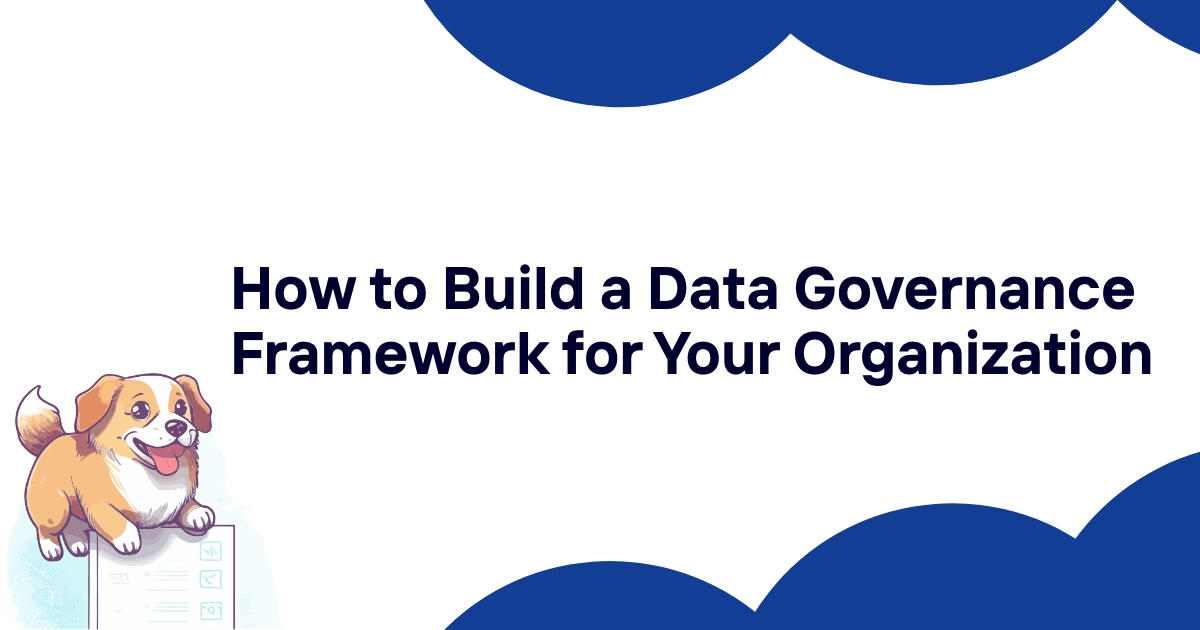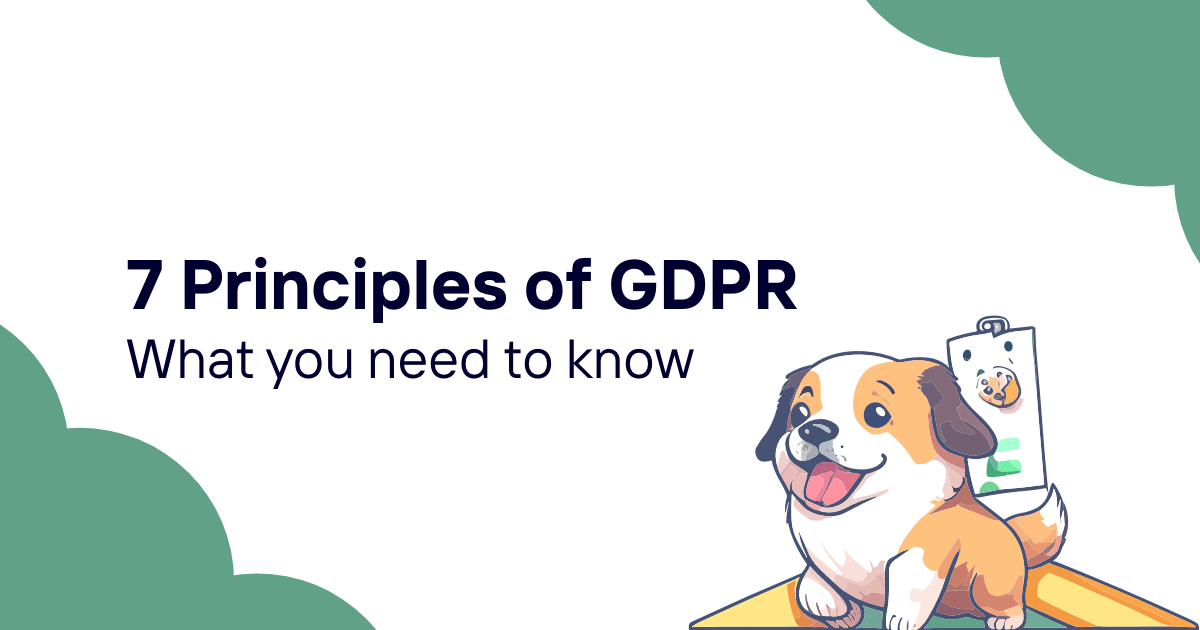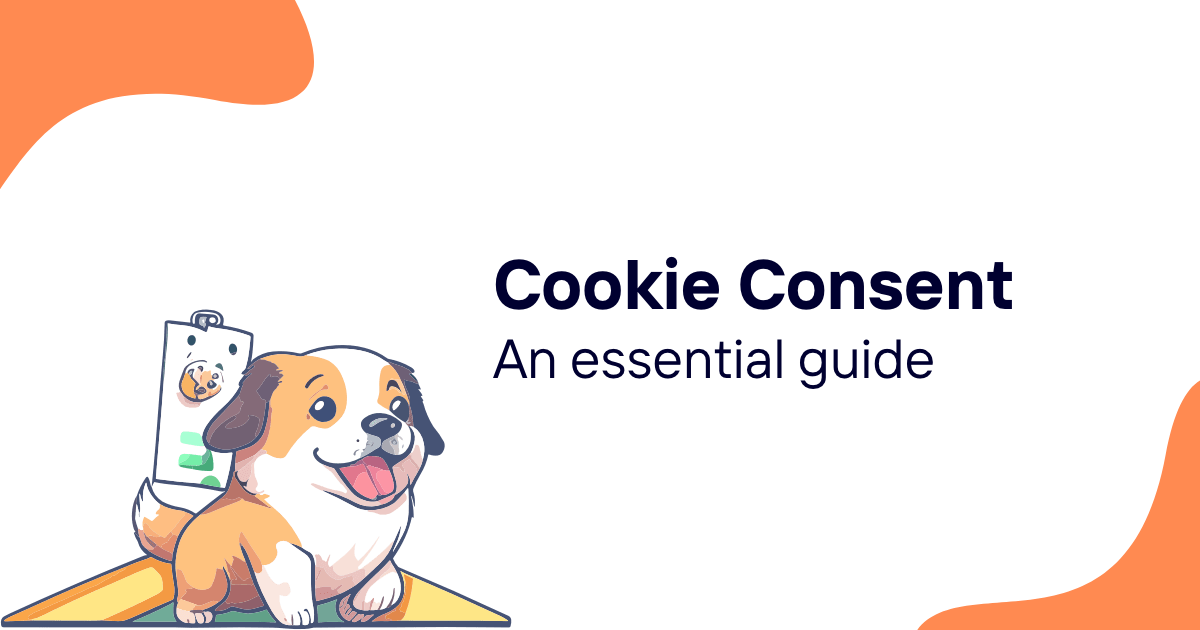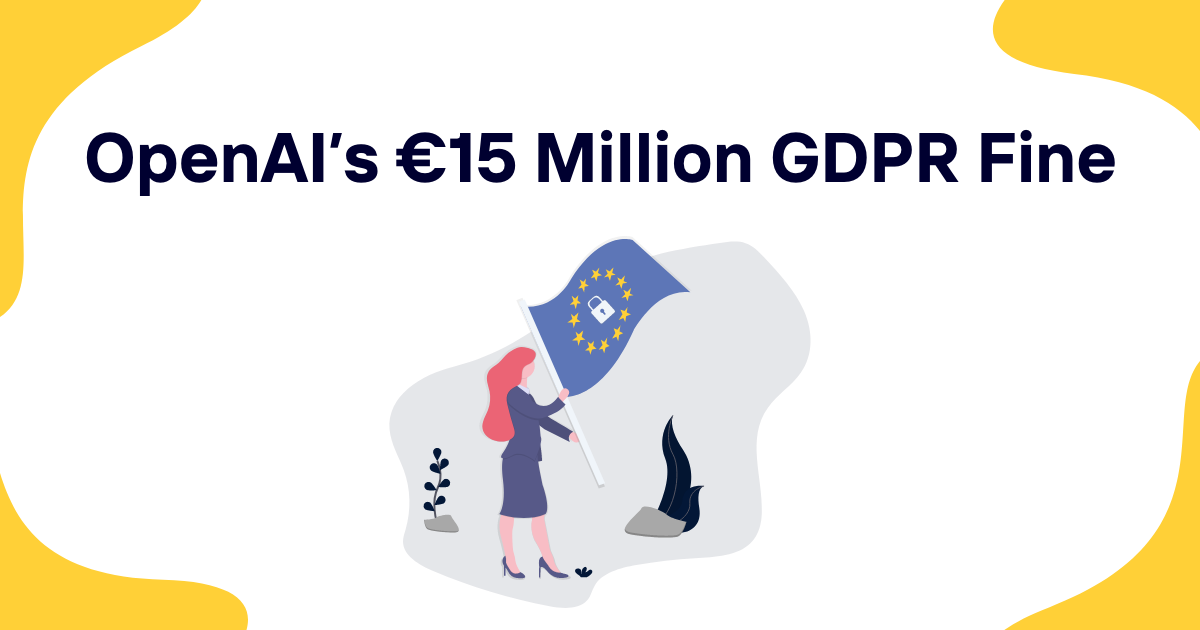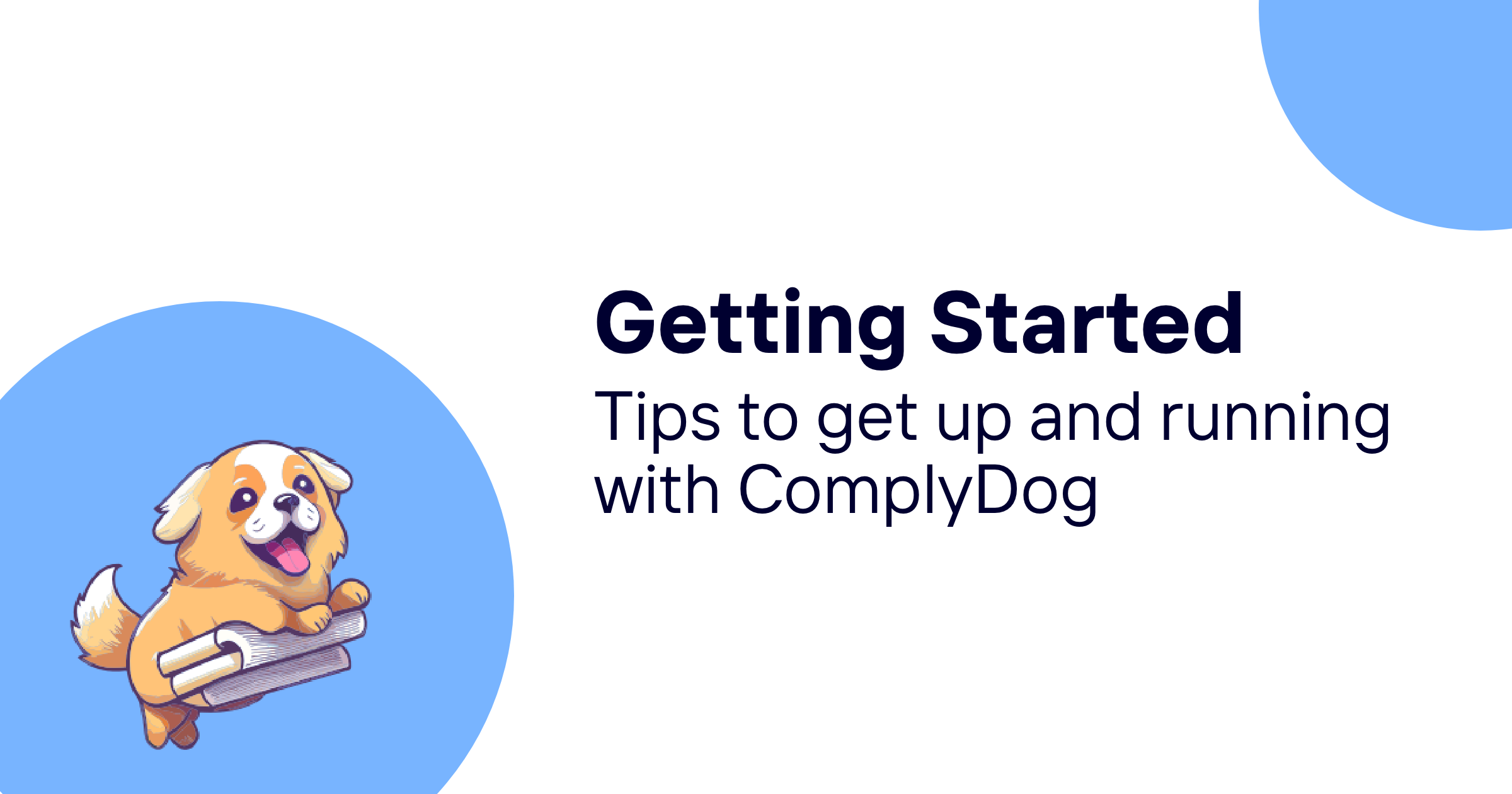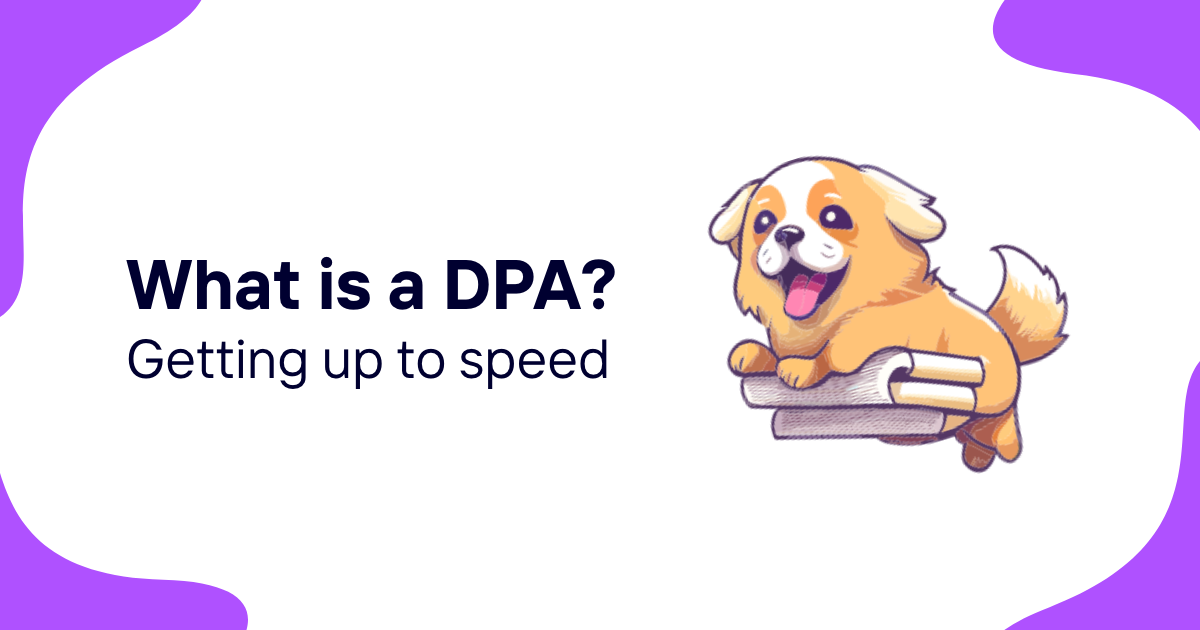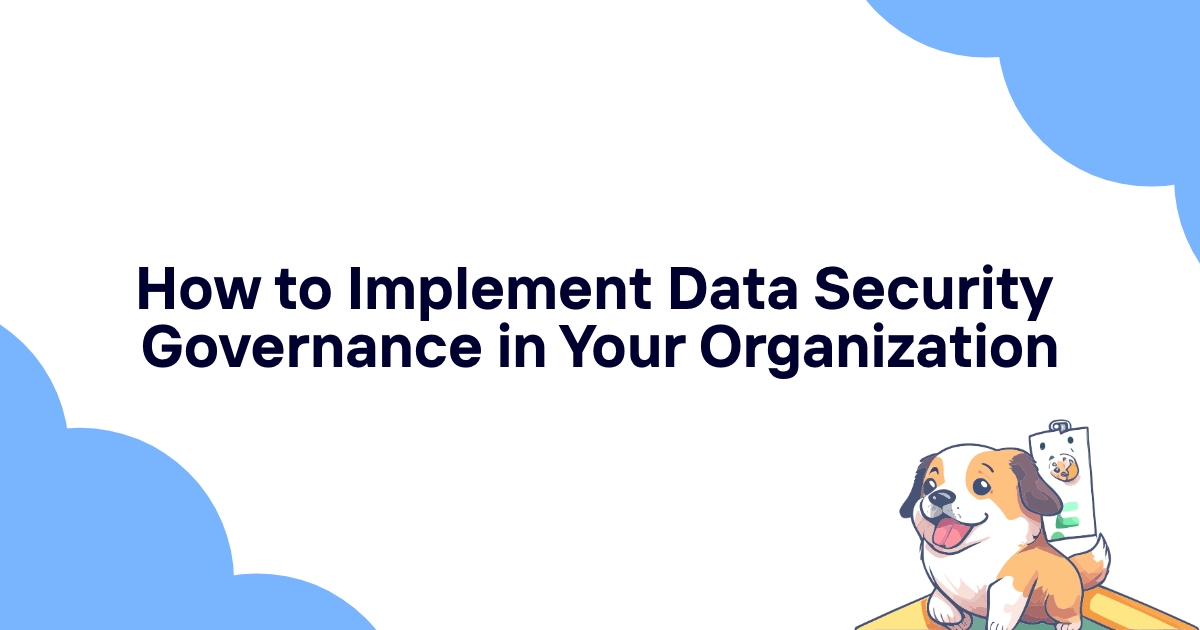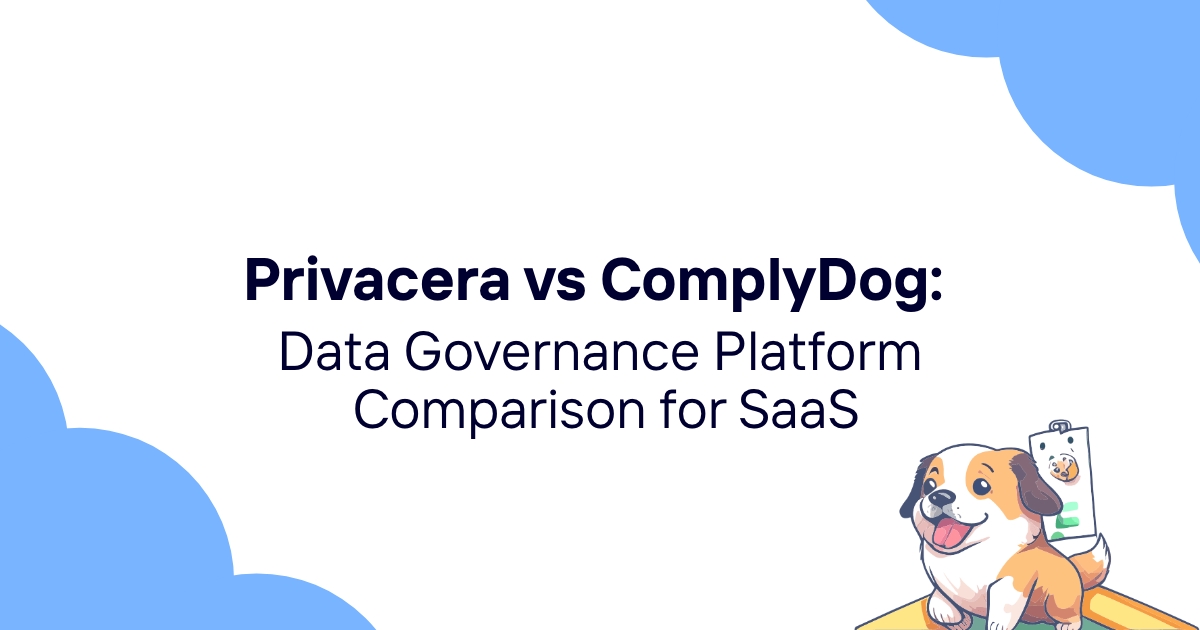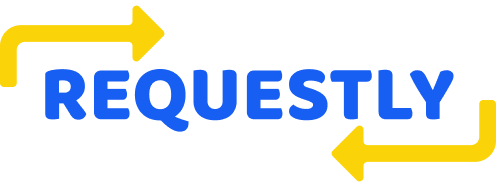Building a robust data governance framework takes more than good intentions and spreadsheets. Organizations often jump into data governance initiatives without a clear roadmap, leading to fragmented efforts and compliance gaps that can cost millions in fines.
Data governance has evolved from a nice-to-have IT initiative into a business-critical function. Companies handling personal data face increasing regulatory scrutiny, customer expectations, and internal stakeholder demands for transparency and accountability. Yet many organizations struggle with where to start, how to prioritize, and what success actually looks like.
The challenge isn't just technical—it's organizational. Data governance cuts across departments, requires executive buy-in, and demands cultural change. Without a structured approach, even well-funded initiatives can stagnate or fail completely.
Table of contents
- Understanding data governance fundamentals
- Pre-implementation assessment
- Building your governance framework
- Establishing data governance roles
- Technology and infrastructure requirements
- Policy development and documentation
- Implementation phases and timeline
- Monitoring and measurement strategies
- Common pitfalls and how to avoid them
- Scaling your data governance program
Understanding data governance fundamentals
Data governance represents the collection of processes, policies, and technologies that ensure data quality, security, and compliance across an organization. Think of it as the constitutional framework for how your company handles information—from collection through deletion.
The scope extends far beyond just managing databases. Modern data governance encompasses data lineage tracking, privacy controls, access management, quality assurance, and regulatory compliance. Organizations must account for structured and unstructured data, whether it sits in cloud environments, on-premises systems, or hybrid architectures.
Data governance differs significantly from data management. While data management focuses on the technical aspects of storing, processing, and retrieving information, governance establishes the rules, accountability structures, and decision-making processes that guide these activities.
Regulatory frameworks like GDPR, CCPA, and sector-specific requirements have transformed data governance from an internal optimization exercise into a legal obligation. Companies now face substantial penalties for data mishandling, making governance programs business-critical rather than optional.
The business value proposition is compelling. Organizations with mature data governance programs report higher data quality, reduced compliance costs, faster decision-making, and improved customer trust. They can also monetize their data assets more effectively because they understand what they have and how it can be used safely.
Pre-implementation assessment
Before designing your governance framework, conduct a thorough assessment of your current data landscape. This diagnostic phase prevents costly missteps and ensures your implementation plan addresses real needs rather than perceived problems.
Start with a comprehensive data inventory. Catalog all data sources, including databases, file systems, cloud storage, SaaS applications, and third-party integrations. Document data types, sensitivity levels, retention periods, and current access controls. Many organizations discover they have far more data sources than initially expected.
Evaluate existing governance capabilities. Review current policies, procedures, and tools. Identify what works well and what needs improvement. Look for gaps in data lineage tracking, inconsistent access controls, or outdated retention policies. This baseline assessment becomes your starting point for measuring progress.
Assess regulatory requirements specific to your industry and geographic footprint. Different jurisdictions impose varying obligations for data handling, breach notification, and individual rights. Create a compliance matrix that maps requirements to current capabilities, highlighting areas needing attention.
Interview key stakeholders across departments. Data governance impacts everyone from IT and legal teams to marketing and customer service. Understanding their current pain points, priorities, and concerns helps shape a program that gains broad organizational support.
The following table outlines key assessment areas and typical findings:
| Assessment Area | Key Questions | Common Findings |
|---|---|---|
| Data Inventory | What data do we collect and store? | Shadow IT systems, redundant data stores |
| Current Policies | What governance rules exist today? | Outdated policies, inconsistent enforcement |
| Technology Stack | What tools support data management? | Fragmented solutions, integration gaps |
| Compliance Status | How do we meet regulatory requirements? | Manual processes, documentation gaps |
| Stakeholder Needs | What are business unit priorities? | Conflicting requirements, unclear ownership |
Document your findings in a current state report that becomes the foundation for your implementation roadmap. This report should quantify risks, identify quick wins, and prioritize areas needing immediate attention.
Building your governance framework
Your governance framework serves as the architectural blueprint for how data decisions get made, implemented, and monitored across your organization. The framework must balance control with flexibility, ensuring compliance without stifling innovation.
Design your governance operating model around three core components: governance bodies, decision rights, and accountability structures. Governance bodies include steering committees, working groups, and subject matter expert teams. Decision rights define who can approve policies, grant access, and resolve conflicts. Accountability structures ensure someone owns each aspect of the program.
Establish clear governance principles that guide decision-making. Common principles include data as a business asset, privacy by design, proportionate security controls, and transparent data handling practices. These principles help resolve conflicts and maintain consistency as your program evolves.
Create a governance charter that formally establishes authority, scope, and objectives. The charter should define the program's mission, key performance indicators, reporting relationships, and budget allocation. Executive sponsorship at this level demonstrates organizational commitment and provides political cover for difficult decisions.
Develop a governance taxonomy that standardizes how you classify and handle different types of data. Categories might include public information, internal business data, confidential customer information, and highly sensitive personal data. Each category should have specific handling requirements, access controls, and retention policies.
Map governance processes to your data lifecycle. From collection through disposal, each stage should have defined checkpoints, approval requirements, and quality controls. This process mapping helps identify automation opportunities and ensures no critical steps get overlooked.
Build feedback loops that allow the framework to evolve based on experience and changing requirements. Regular reviews should assess policy effectiveness, stakeholder satisfaction, and emerging risks. Flexibility is particularly important as new technologies and regulations reshape the data landscape.
Establishing data governance roles
Successful data governance requires clearly defined roles with specific responsibilities and accountability measures. The traditional approach of assigning governance tasks to existing IT staff rarely works because it lacks dedicated focus and cross-functional perspective.
Appoint a Chief Data Officer (CDO) or senior data governance leader who reports directly to executive leadership. This person becomes the program champion, budget owner, and primary escalation point for governance issues. They need both technical depth and business acumen to bridge different organizational perspectives.
Create Data Owner roles for business units who generate or primarily use specific datasets. Data Owners make policy decisions about their domains, approve access requests, and take accountability for compliance within their areas. They typically come from business units rather than IT departments.
Establish Data Steward positions to implement and monitor governance policies on a day-to-day basis. Stewards handle data quality monitoring, access provisioning, policy interpretation, and stakeholder communication. They serve as the operational backbone of your governance program.
Form a Data Governance Council with representatives from key stakeholder groups including legal, IT, security, compliance, and major business units. The council reviews policy proposals, resolves conflicts, and provides strategic direction for the program. Regular meetings ensure governance remains aligned with business priorities.
Designate Data Custodians within IT teams who handle the technical implementation of governance requirements. Custodians configure access controls, implement retention policies, and maintain the technical infrastructure supporting governance processes. They translate business policies into technical controls.
Consider creating specialized roles like Privacy Officers for GDPR compliance or Data Architects who design governance-friendly system architectures. The specific roles depend on your industry, size, and regulatory requirements.
The following list outlines key responsibilities for core governance roles:
- Chief Data Officer: Strategic leadership, budget ownership, executive reporting, stakeholder alignment
- Data Owner: Policy approval, access authorization, compliance accountability, business alignment
- Data Steward: Daily operations, quality monitoring, user support, policy implementation
- Data Custodian: Technical controls, system configuration, infrastructure maintenance
- Governance Council: Strategic oversight, conflict resolution, policy review, cross-functional coordination
Provide role-specific training and certification programs. Data governance involves specialized knowledge about regulations, technologies, and best practices. Investing in training ensures your team can execute their responsibilities effectively and adapt to evolving requirements.
Technology and infrastructure requirements
Modern data governance programs require sophisticated technology platforms that can scale with growing data volumes while maintaining security and performance. The technology foundation determines what governance capabilities are possible and how efficiently they can be delivered.
Implement a comprehensive data catalog that automatically discovers, classifies, and maintains an inventory of your data assets. The catalog should provide business users with self-service discovery capabilities while giving governance teams visibility into data lineage, quality metrics, and usage patterns. Look for solutions that integrate with your existing data infrastructure.
Deploy data classification tools that can automatically identify sensitive information like personally identifiable information (PII), financial data, and health records. Manual classification doesn't scale in modern data environments. Automated classification ensures consistent policy application and reduces the risk of overlooked sensitive data.
Establish robust access control systems that support fine-grained permissions, role-based access, and dynamic authorization policies. Your access controls should integrate with identity management systems and provide detailed audit trails. Consider attribute-based access control (ABAC) for complex permission requirements.
Install data quality monitoring tools that continuously assess data accuracy, completeness, consistency, and timeliness. These tools should provide real-time alerts for quality issues and integrate with governance workflows for remediation. Quality metrics become key performance indicators for your governance program.
Implement data lineage tracking capabilities that map how information flows through your systems. Lineage tracking is critical for impact analysis, compliance reporting, and troubleshooting data quality issues. Look for solutions that can handle both technical and business lineage.
Deploy privacy management platforms that automate privacy impact assessments, consent management, and individual rights fulfillment. These platforms should integrate with your data catalog and classification tools to provide end-to-end privacy protection capabilities.
Consider the following technology categories and their governance applications:
- Data Catalogs: Discovery, inventory management, metadata management
- Classification Tools: Automated sensitive data identification, policy enforcement
- Access Control: Permission management, audit trails, policy enforcement
- Quality Monitoring: Continuous assessment, issue detection, metrics reporting
- Lineage Tracking: Impact analysis, compliance documentation, troubleshooting
- Privacy Platforms: Consent management, rights fulfillment, risk assessment
Plan for integration across your technology stack. Governance tools must work together seamlessly to provide unified visibility and control. APIs, standard data formats, and shared metadata repositories facilitate integration while reducing vendor lock-in risks.
Policy development and documentation
Comprehensive policies form the backbone of any effective data governance program. Policies translate strategic principles into specific, actionable requirements that guide daily operations and decision-making across the organization.
Start with a data governance policy that establishes overarching principles, roles, and responsibilities. This master policy should define your organization's approach to data as an asset, privacy protection, security requirements, and compliance obligations. Keep it strategic rather than tactical—detailed procedures belong in separate documents.
Develop data classification policies that define how information gets categorized based on sensitivity, business value, and regulatory requirements. Each classification level should have specific handling requirements, access restrictions, and retention schedules. Clear classification criteria prevent inconsistent application and support automated tooling.
Create access control policies that specify who can access what data under which circumstances. Include provisioning procedures, periodic access reviews, and deprovisioning requirements. Address both human users and system accounts. Consider different access patterns like read-only, analytical, and administrative privileges.
Establish data retention and disposal policies that comply with regulatory requirements while supporting business needs. Different data types may have different retention periods based on legal obligations, business value, and storage costs. Include secure disposal procedures that prevent data recovery.
Draft data quality policies that define standards for accuracy, completeness, consistency, and timeliness. Include quality measurement methods, remediation procedures, and accountability structures. Quality policies should address both source system requirements and downstream data integration standards.
Write incident response policies specifically for data governance issues like quality problems, access violations, or compliance failures. Include escalation procedures, communication requirements, and remediation steps. Fast, consistent incident response protects your organization and demonstrates governance maturity.
Policy documentation should follow consistent templates and include the following elements:
- Purpose and Scope: What the policy covers and why it exists
- Definitions: Key terms and concepts used in the policy
- Policy Statements: Specific requirements and prohibitions
- Roles and Responsibilities: Who does what under the policy
- Procedures: Step-by-step implementation guidance
- Exceptions and Approvals: How to handle special cases
- Compliance and Monitoring: How adherence gets measured
- Review and Updates: How often policies get revised
Engage stakeholders throughout policy development to ensure requirements are realistic and complete. Policies created in isolation often miss important business requirements or create unintended operational challenges. Regular stakeholder review prevents policy drift and maintains organizational buy-in.
Implementation phases and timeline
Successful data governance implementation requires a phased approach that builds capability progressively while delivering value at each stage. Trying to implement everything simultaneously often leads to resource constraints, stakeholder fatigue, and program failure.
Phase 1: Foundation (Months 1-6)
Establish basic governance structures and core policies. Focus on high-impact, low-complexity initiatives that demonstrate value quickly. Key deliverables include governance charter, organizational structure, basic policies, and initial technology deployments.
Start with data discovery and cataloging to understand your current data landscape. Implement basic classification schemes for your most sensitive data types. Establish core governance roles and provide initial training. Create simple workflows for common governance tasks like access requests and data quality incidents.
Phase 2: Expansion (Months 7-12)
Extend governance coverage to additional data domains and business processes. Refine policies based on operational experience. Deploy more sophisticated technology capabilities like automated classification and lineage tracking.
Expand your data catalog to include more systems and data types. Implement comprehensive access control policies with automated provisioning workflows. Begin regular data quality monitoring and establish baseline metrics. Start conducting privacy impact assessments for new data processing activities.
Phase 3: Optimization (Months 13-18)
Focus on automation, integration, and performance improvement. Implement advanced analytics for governance metrics and predictive capabilities. Extend governance to cover emerging technologies and data sources.
Deploy machine learning-powered classification and quality monitoring. Implement self-service governance capabilities for business users. Create comprehensive compliance reporting and monitoring dashboards. Begin advanced privacy protection features like differential privacy or synthetic data generation.
Each phase should include specific milestones, success criteria, and stakeholder communication plans. Regular checkpoints allow you to adjust priorities based on changing business needs or regulatory requirements.
The implementation timeline depends on organizational size, complexity, and resource availability. Smaller organizations might compress these phases, while large enterprises may need additional time for change management and integration challenges.
Monitoring and measurement strategies
Effective measurement demonstrates governance value, identifies improvement opportunities, and ensures program sustainability. Without clear metrics, governance programs often lose executive support or drift away from business priorities.
Establish key performance indicators (KPIs) that align with business objectives and stakeholder expectations. Common governance KPIs include data quality scores, policy compliance rates, incident resolution times, and stakeholder satisfaction surveys. Choose metrics that drive desired behaviors rather than just measuring activity.
Implement continuous monitoring for critical governance processes. Automated monitoring can track access violations, quality degradation, or compliance failures in real-time. Early detection enables faster remediation and reduces business impact.
Create governance dashboards that provide different views for different stakeholder groups. Executive dashboards should focus on strategic metrics and risk indicators. Operational dashboards need detailed metrics for day-to-day management. Business unit dashboards should highlight metrics relevant to their specific domains.
Establish benchmarking practices that compare your performance against industry standards or peer organizations. External benchmarking helps calibrate expectations and identify improvement opportunities. Internal benchmarking tracks progress over time.
Track both leading and lagging indicators to get a complete picture of governance performance. Leading indicators like policy adoption rates or training completion predict future outcomes. Lagging indicators like compliance audit results or incident counts measure actual outcomes.
The following table outlines key measurement categories and example metrics:
| Category | Example Metrics | Purpose |
|---|---|---|
| Data Quality | Accuracy rates, completeness scores, consistency measures | Monitor data reliability |
| Compliance | Policy adherence rates, audit findings, regulatory violations | Track regulatory compliance |
| Operations | Incident resolution times, request fulfillment rates | Measure operational efficiency |
| Adoption | Training completion, policy acknowledgment, tool usage | Assess program adoption |
| Business Value | Cost savings, risk reduction, decision speed | Demonstrate business impact |
Conduct regular governance assessments that evaluate program maturity and effectiveness. Annual assessments provide opportunities for strategic planning and stakeholder alignment. Quarterly reviews focus on operational performance and tactical improvements.
Common pitfalls and how to avoid them
Data governance implementations face predictable challenges that can derail even well-planned programs. Learning from common mistakes helps organizations navigate these challenges successfully and maintain program momentum.
Lack of Executive Support
Governance programs require sustained executive commitment through organizational changes, budget cycles, and competing priorities. Without visible leadership support, middle management may not prioritize governance requirements, and staff may not take policies seriously.
Secure executive sponsorship early and maintain it through regular communication about program value and progress. Include governance metrics in executive reporting and tie governance performance to business outcomes. Make governance part of leadership accountability structures.
Over-Engineering the Solution
Technical teams often design governance solutions that are too complex for business users to adopt effectively. Overly complex workflows, excessive approval requirements, and difficult-to-use tools create user resistance and workarounds that undermine governance objectives.
Design governance processes with end users in mind. Test workflows with actual business users before full deployment. Prioritize usability and automation over comprehensive control. Remember that governance should enable business objectives, not hinder them.
Insufficient Change Management
Governance programs change how people work, make decisions, and interact with data. Without proper change management, organizations face user resistance, incomplete adoption, and cultural pushback that can kill governance initiatives.
Invest in comprehensive change management including communication campaigns, training programs, and stakeholder engagement. Address concerns proactively and celebrate early wins. Make governance part of employee performance expectations and recognition programs.
Underestimating Resource Requirements
Many organizations underestimate the ongoing effort required to maintain effective governance programs. After initial implementation, governance requires continuous monitoring, policy updates, training, and technology maintenance.
Plan for long-term resource requirements including dedicated staff, technology costs, and training budgets. Build governance costs into annual planning cycles. Consider outsourcing certain functions if internal resources are limited.
Ignoring Business Context
Governance programs designed primarily from IT or compliance perspectives often miss important business requirements. Policies that don't account for business workflows, customer expectations, or competitive pressures face adoption challenges.
Engage business stakeholders throughout program development and implementation. Understand business processes, customer journeys, and competitive requirements. Design governance that supports rather than impedes business objectives.
Scaling your data governance program
As organizations grow and data environments become more complex, governance programs must scale to maintain effectiveness. Scaling involves both expanding coverage to new areas and deepening capabilities in existing domains.
Develop modular governance capabilities that can be replicated across business units, geographic regions, or data domains. Standardized templates, automated workflows, and consistent tooling enable rapid expansion while maintaining quality and consistency.
Implement federation models that allow local customization within global frameworks. Different business units may have unique requirements while still needing to comply with enterprise-wide policies. Federation balances consistency with flexibility.
Leverage automation to handle routine governance tasks at scale. Automated classification, access provisioning, quality monitoring, and compliance reporting reduce manual effort while improving consistency. Focus human resources on strategic decisions and complex problem-solving.
Build governance capabilities into development and deployment processes. DevOps practices should include governance checkpoints, automated policy enforcement, and compliance validation. Shift-left approaches catch governance issues early when they're cheaper and easier to fix.
Create self-service governance capabilities that empower business users while maintaining appropriate controls. Self-service reduces bottlenecks and improves user satisfaction while extending governance reach without proportional resource increases.
Consider cloud-native governance architectures that can scale dynamically with data volumes and processing requirements. Cloud platforms provide elasticity and advanced capabilities like AI-powered classification and automated policy enforcement.
Plan for emerging technologies like artificial intelligence, Internet of Things sensors, and edge computing that create new governance challenges. Your governance framework should be flexible enough to accommodate these technologies as they become mainstream.
Data governance has become a competitive advantage for organizations that implement it effectively. Companies with mature governance programs make faster, better-informed decisions while reducing regulatory risks and operational costs. They build trust with customers, partners, and regulators through transparent, accountable data handling practices.
The key to successful implementation lies in treating governance as a business capability rather than a technical project. Focus on enabling business objectives while meeting compliance requirements. Invest in people, processes, and technology in balanced proportions.
Modern compliance platforms like ComplyDog simplify governance implementation by providing integrated tools for data discovery, classification, access control, and compliance reporting. These platforms reduce the technical complexity of governance programs while ensuring comprehensive coverage of regulatory requirements. By leveraging purpose-built compliance software, organizations can accelerate their governance maturity and focus resources on strategic initiatives rather than operational overhead.
Visit ComplyDog.com to learn how automated compliance tools can streamline your data governance implementation and ensure ongoing GDPR compliance success.
